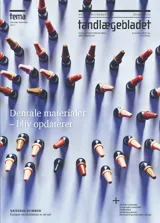How do resin composites perform in the long run?
Restorative dental treatment still lays claim to a large proportion of dentists’ working day. After the phase-out of amalgam as a restorative material, composite resin has become the dominating material of choice among dentists. The development of both restorative materials and techniques aim to improve treatment outcomes. At present, there is a wide variety of resin composite materials on the market and the development of new products is rapid.
The ability to predict results in the clinic based on only in vitro studies, is however limited. It is therefore necessary to perform clinical trials that test the restorative materials under realistic conditions. Clinical trials of restoration longevity include randomized controlled trials (RCTs), retrospective cross-sectional studies and practice-based studies, which all have different strengths and weaknesses.
Some few systematic reviews have compared and evaluated clinical studies on restoration longevity. Secondary caries and fractures are considered to be the most common reasons for replacement of resin composite fillings.
Since the development of secondary caries and other restoration failures takes some time, it is crucial that clinical studies have long observation times to be able to provide a reliable result. Resin composites are today considered to have comparable longevity with amalgam, presenting annual failure rates (AFRs) of 1-3%.
Four main factors seem to influence restoration longevity; the material, the method, the operator and the patient. Today’s resin composites are generally of good quality, so the longevity of a restoration is above all dependent on factors related to the patient and operator



